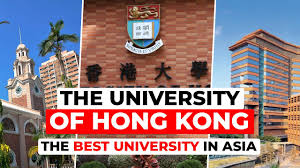
Engineering
| Location: | UK Other |
| Closing Date: | Friday 15 September 2023 |
| Reference: | ENG1694 |
Ball bearings and roller bearings play crucial roles in most rotating machines. Their design and selection involves a complex mix of considerations including component life under normal running conditions, power losses, vibrations in the machine and the ability to carry exceptional loads when/if these loads come to exist. These bearings, collectively called rolling-element bearings, are key parts of aero-engines, centrifuges, wind turbines, electric motors, range extenders, fans, pumps, compressors etc. etc. and they serve in almost every industry imaginable ranging from renewable energy through oil-and-gas exploitation and transport.
The way that rolling element bearings affect the vibrations of the machine in which they serve is a rich area for study. At a first level, they provide a stiff connection between the stationary and rotating parts of a spinning machine with very little intrinsic damping. However, their full behaviour is much more complex than this. Their characteristics are currently estimated and modelled under the assumptions that they carry steady forces but these methods do not account for the complexity of the dynamic environment of a multi-rotor machine such as a gas turbine engine. Interactions of the bearings and the rotors cause many of the complex vibration responses that are used for diagnosis of engine faults. However, these diagnostic methods are limited in their real-world application due to the complexity and limited measurements on the engines.
There is a very real need for a generic representation for bearings with the following attributes: (1) it is computationally fast to run so that it can be used in advanced engine simulations, (2) the parameters defining the representation can be found readily from a small set of tests and (3) it has good fidelity to the actual behaviour of the bearings. Such a representation might be built on an AI framework or might use a more direct parametrisation. Once a number of specific bearing configurations have been suitably characterised, an AI framework should be able to interpolate between these to make high-quality approximations for bearings for which no experimental data has yet been obtained.
This PhD studentship will be hosted within the “Mechanical and Aerospace Systems” research group at the University of Nottingham. For almost 25 years, the group has hosted the Rolls-Royce University Technology Centre in Gas Turbine Transmission Systems and it has an active cohort of engaged PhD students and focused academic staff. The work is of direct interest to Rolls-Royce plc and there is a strong probability that the successful candidate will receive guidance and support from experts within the company as well as from the direct academic advisors. Because the studentship is funded through the “Industrial CASE” scheme, the successful candidate will have to have full residency in the UK or Ireland.
Please apply here https://www.nottingham.ac.uk/pgstudy/how-to-apply/apply-online.aspx
When applying for this studentship, please include the reference number (beginning ENG and supervisors name) within the personal statement section of the application. This will help in ensuring your application is sent directly to the academic advertising the studentship.
The University actively supports equality, diversity and inclusion and encourages applications from all sections of society.
For any enquiries about the project and the funding please email Professor Seamus Garvey (seamus.garvey@nottingham.ac.uk)




